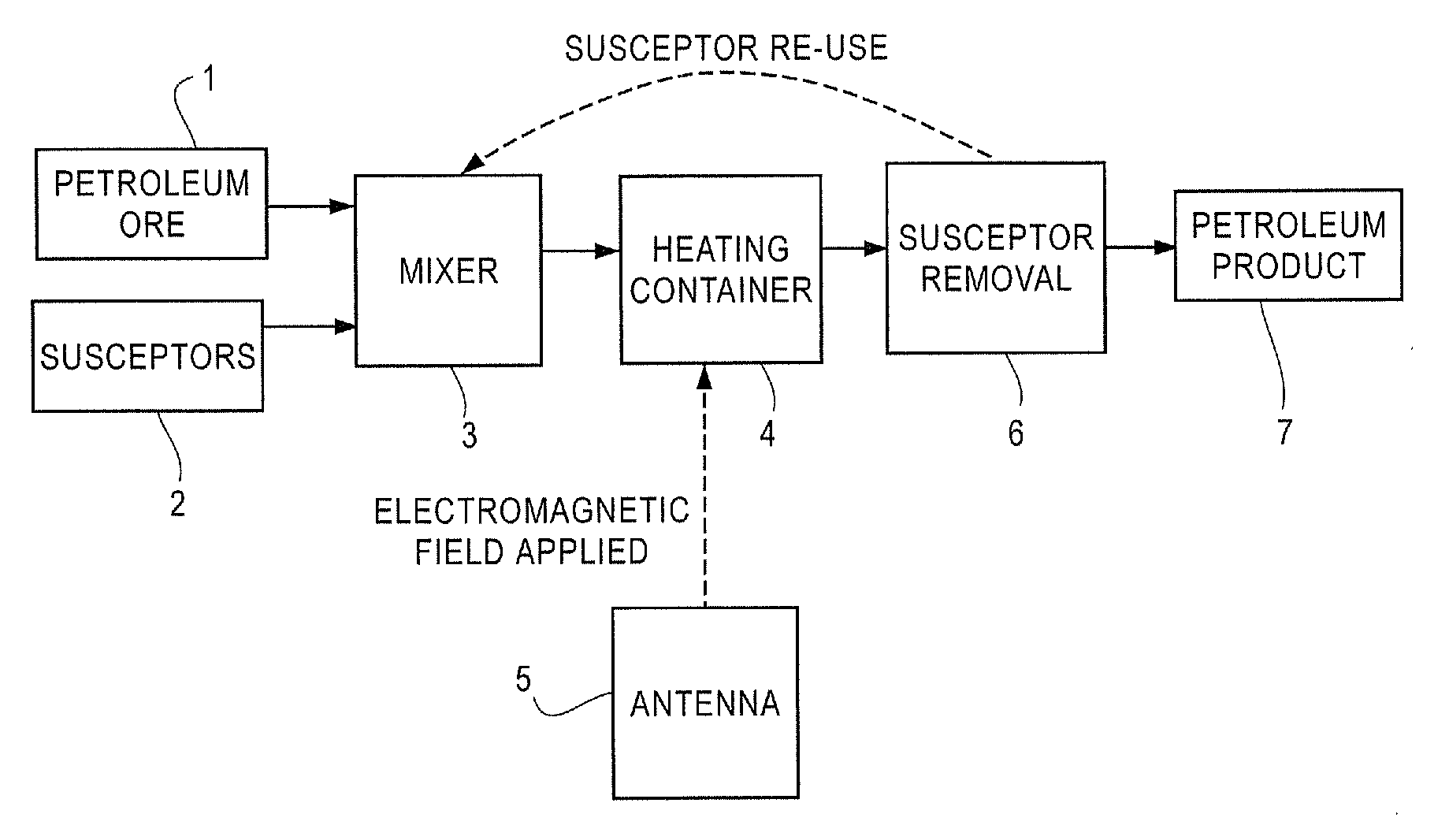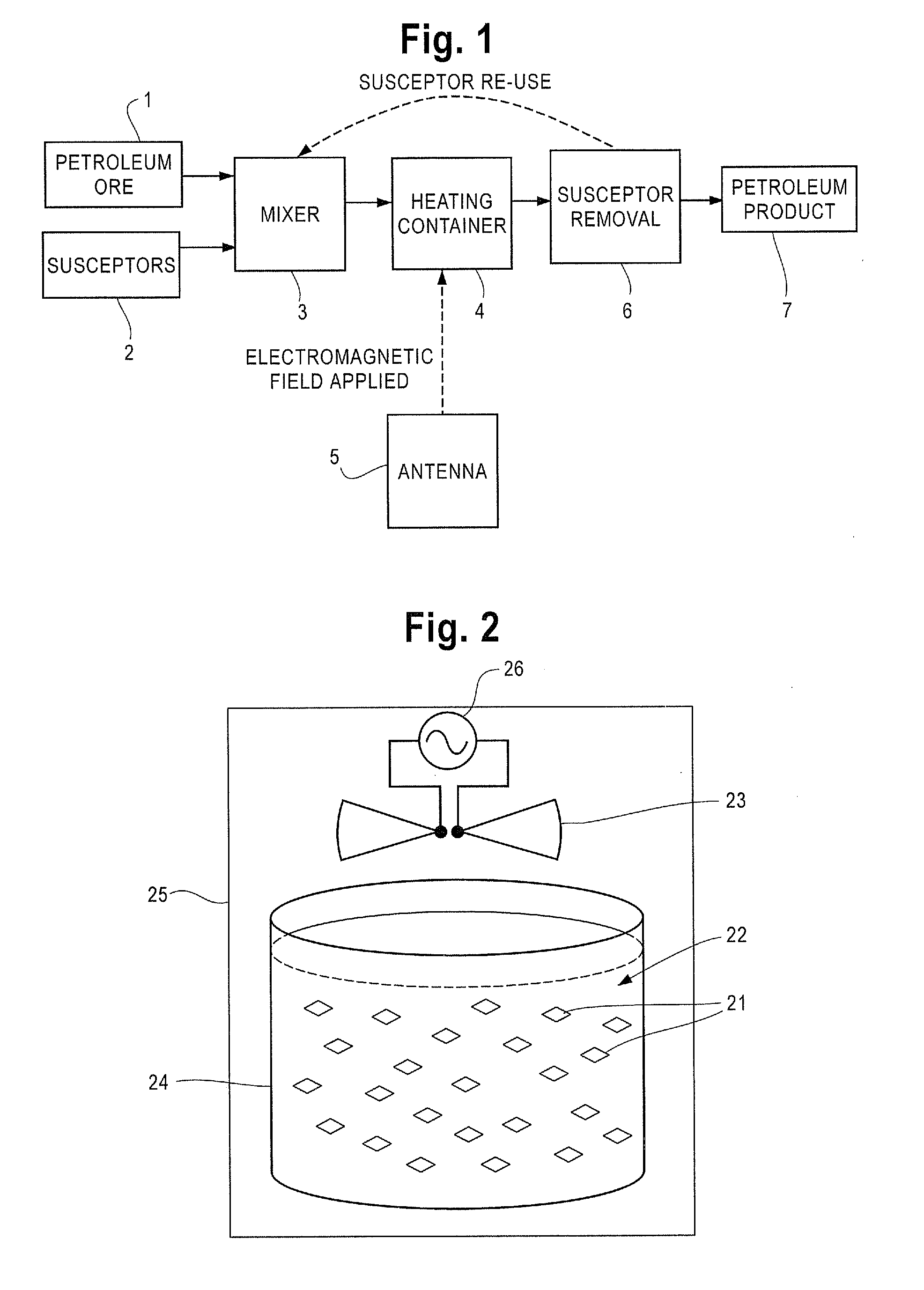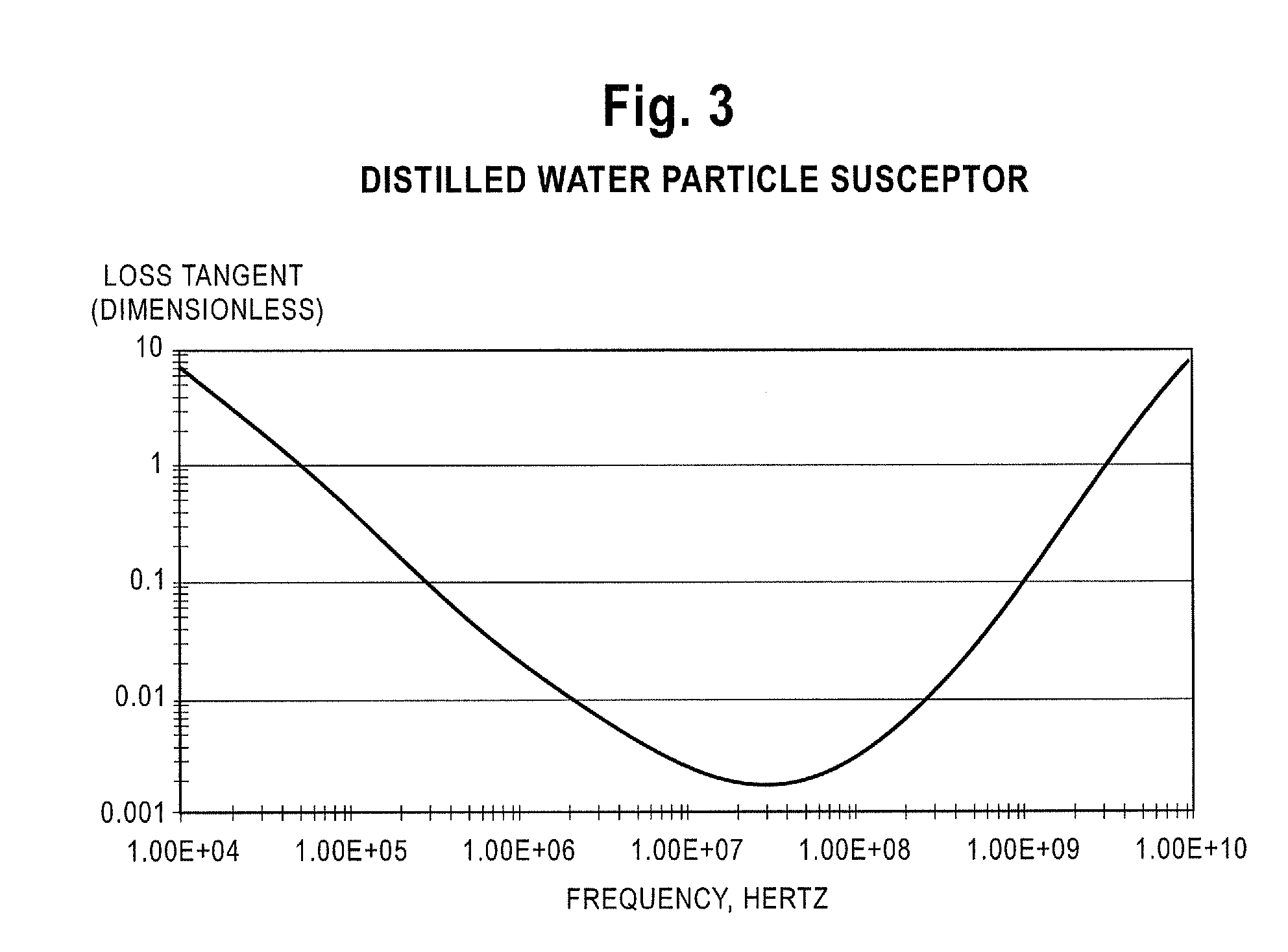Radio frequency heating of petroleum ore by particle susceptors
- Summary
- Abstract
- Description
- Claims
- Application Information
AI Technical Summary
Benefits of technology
Problems solved by technology
Method used
Image
Examples
example 1
RF Heating of Petroleum Ore without Particle Susceptors
[0054]A sample of ¼ cup of Athabasca oil sand was obtained at an average temperature of 72° F. (22° C.). The sample was contained in a Pyrex glass container. A GE DE68-0307A microwave oven was used to heat the sample at 1 KW at 2450 MHz for 30 seconds (100% power for the microwave oven). The resulting average temperature after heating was 125° F. (51° C.).
example 2
RF Heating of Petroleum Ore with Magnetic Particle Susceptors
[0055]A sample of ¼ cup of Athabasca oil sand was obtained at an average temperature of 72° F. (22° C.). The sample was contained in a Pyrex glass container. 1 Tablespoon of nickel zinc ferrite nanopowder (PPT #FP350 CAS 1309-31-1) at an average temperature of 72° F. (22° C.) was added to the Athabasca oil sand and uniformly mixed. A GE DE68-0307A microwave oven was used to heat the mixture at 1 KW at 2450 MHz for 30 seconds (100% power for the microwave oven). The resulting average temperature of the mixture after heating was 196° F. (91° C.).
example 3
(Hypothetical Example) RF Heating of Petroleum Ore with Conductive Susceptors
[0056]A sample of ¼ cup of Athabasca oil sand is obtained at an average temperature of 72° F. (22° C.). The sample is contained in a Pyrex glass container. 1 Tablespoon of powdered pentacarbonyl E iron at an average temperature of 72° F. (22° C.) is added to the Athabasca oil sand and uniformly mixed. A GE DE68-0307A microwave oven is used to heat the mixture at 1 KW at 2450 MHz for 30 seconds (100% power for the microwave oven). The resulting average temperature of the mixture after heating will be greater than the resulting average temperature achieved using the method of Example 1.
PUM
| Property | Measurement | Unit |
|---|---|---|
| Temperature | aaaaa | aaaaa |
| Temperature | aaaaa | aaaaa |
| Fraction | aaaaa | aaaaa |
Abstract
Description
Claims
Application Information
 Login to View More
Login to View More - R&D
- Intellectual Property
- Life Sciences
- Materials
- Tech Scout
- Unparalleled Data Quality
- Higher Quality Content
- 60% Fewer Hallucinations
Browse by: Latest US Patents, China's latest patents, Technical Efficacy Thesaurus, Application Domain, Technology Topic, Popular Technical Reports.
© 2025 PatSnap. All rights reserved.Legal|Privacy policy|Modern Slavery Act Transparency Statement|Sitemap|About US| Contact US: help@patsnap.com



